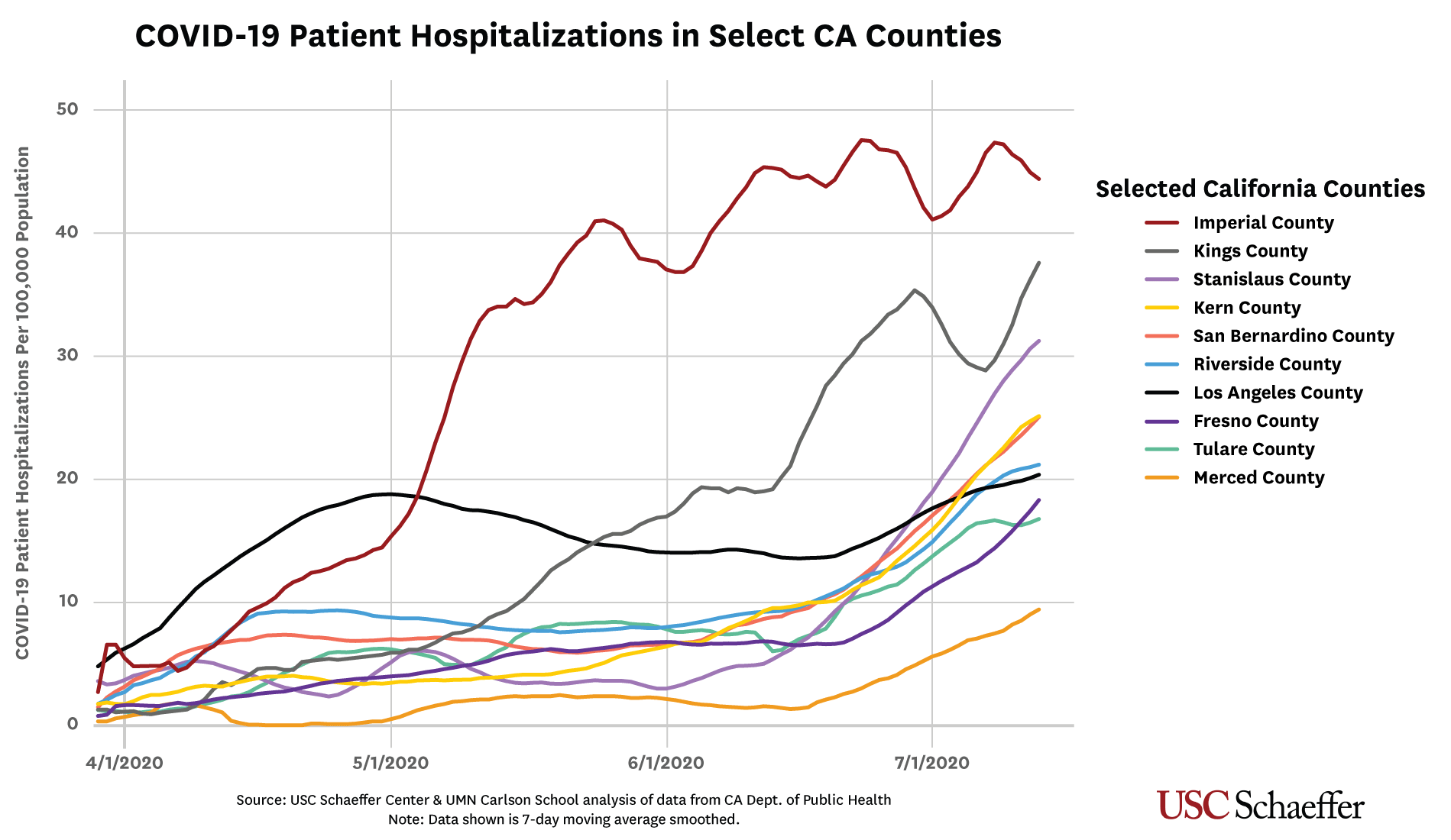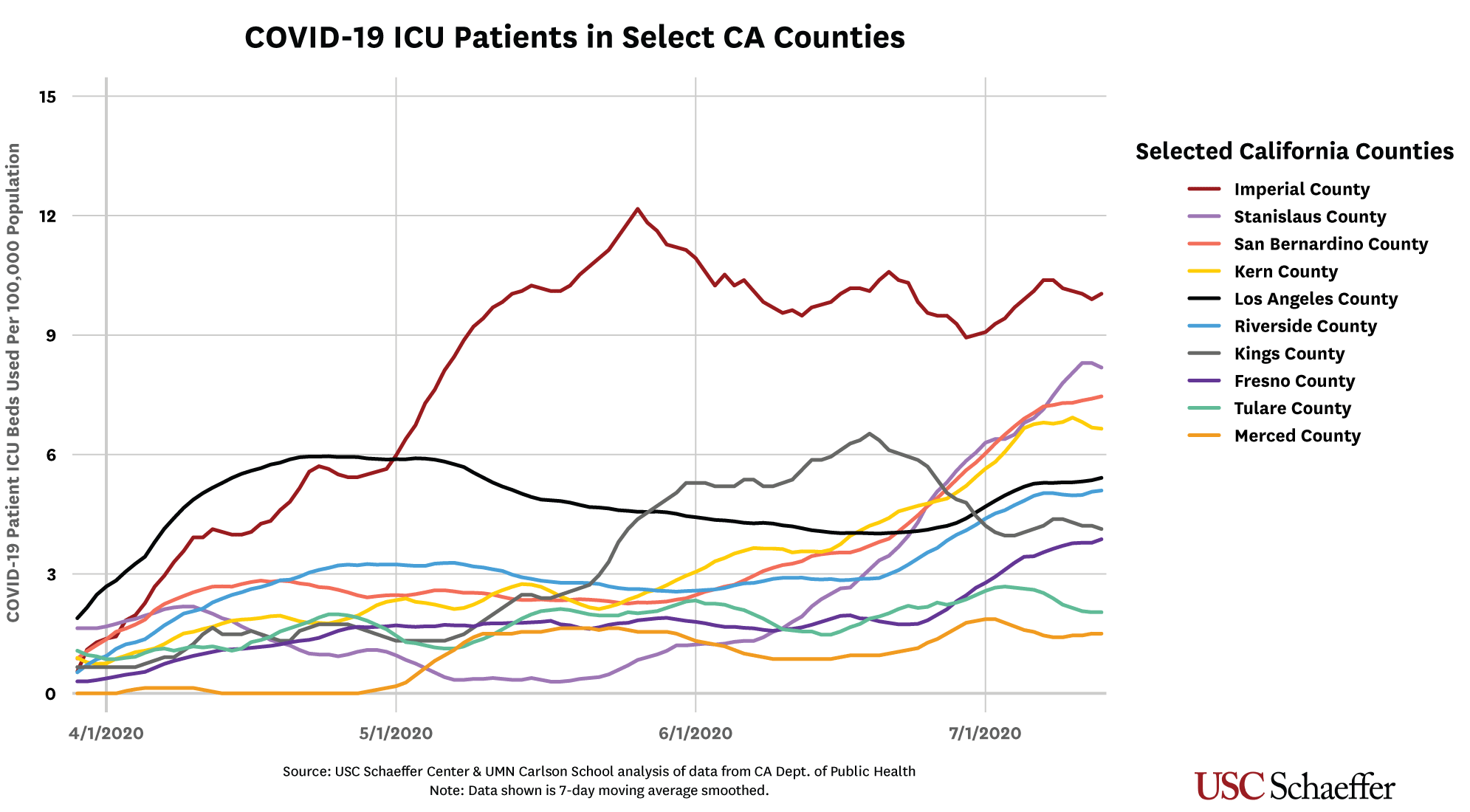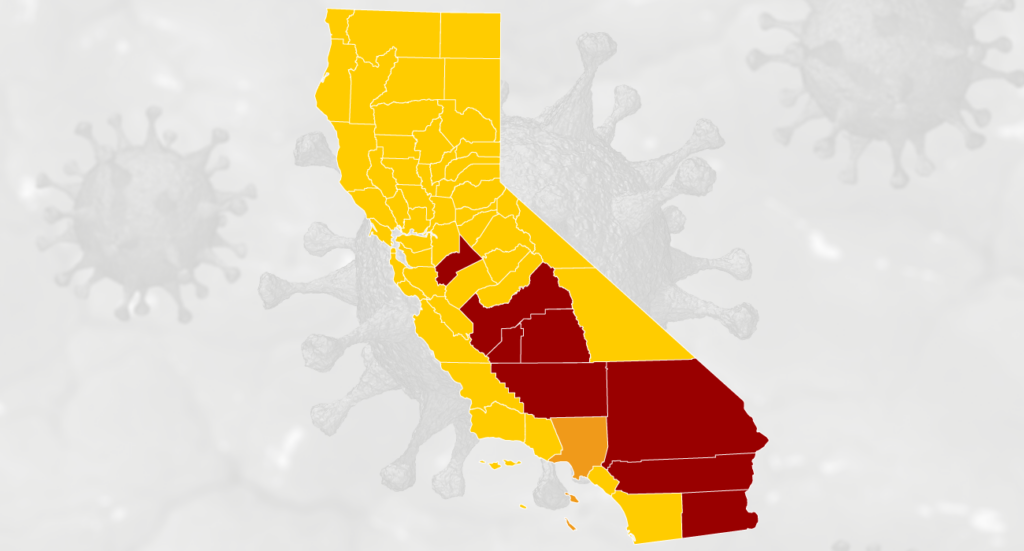Editor’s note: This analysis is a collaboration between the USC Schaeffer Center for Health Policy & Economics and the University of Minnesota Carlson School of Management’s Medical Industry Leadership Institute, and Management Information Systems Research Center.
While Los Angeles County still surpasses all other California counties with over one-third of confirmed coronavirus cases in the state, many areas are recording rapid increases in both cases and hospitalizations. Yesterday, we posted rates of hospital and ICU bed use in southern and coastal California counties. Today, we look at the Inland Empire and Central Valley regions.
We find that on a per-capita basis, many counties in the Inland Empire and Central Valley are recording dramatic increases in the number of COVID-19 patients hospitalized and in ICU beds; in recent weeks the rates in many counties have surpassed L.A. County.

As of July 13, Imperial, Kings, Stanislaus, Kern, San Bernardino, and Riverside counties all recorded more COVID-19 hospitalizations per 100,000 than L.A. County. This is especially concerning given that all but one of these counties (Stanislaus) have less beds per capita than L.A. County. Though, it is important to point out that hospitals across the state have added beds to prepare for an influx of coronavirus patients so bed counts may have changed.
Many of these counties have also surpassed L.A. County in per-capita COVID-19 ICU patients.

While COVID-19 hit dense, major cities across the country first, including the New York City and the San Francisco Bay area, increasingly it is spreading to more rural areas. This may be partly a reflection of who is an essential worker and who can work from home. The Inland Empire and Central Valley are home to major warehouses and distribution centers for Amazon and Walmart, as well as agricultural production. These are all work places that increased production to keep up with increased demand and often require working in close proximity. In contrast, many individuals in cities were able to stay home.
Given these work place dynamics, the hospitalization and ICU trends in these counties are even more worrisome. As cities and counties across the state consider shutting down again, many communities in the Inland Empire and Central Valley will keep working in work places that might be COVID-19 hot spots. And hospitals in these communities may not have the capacity to treat the increasing number of patients.

You must be logged in to post a comment.